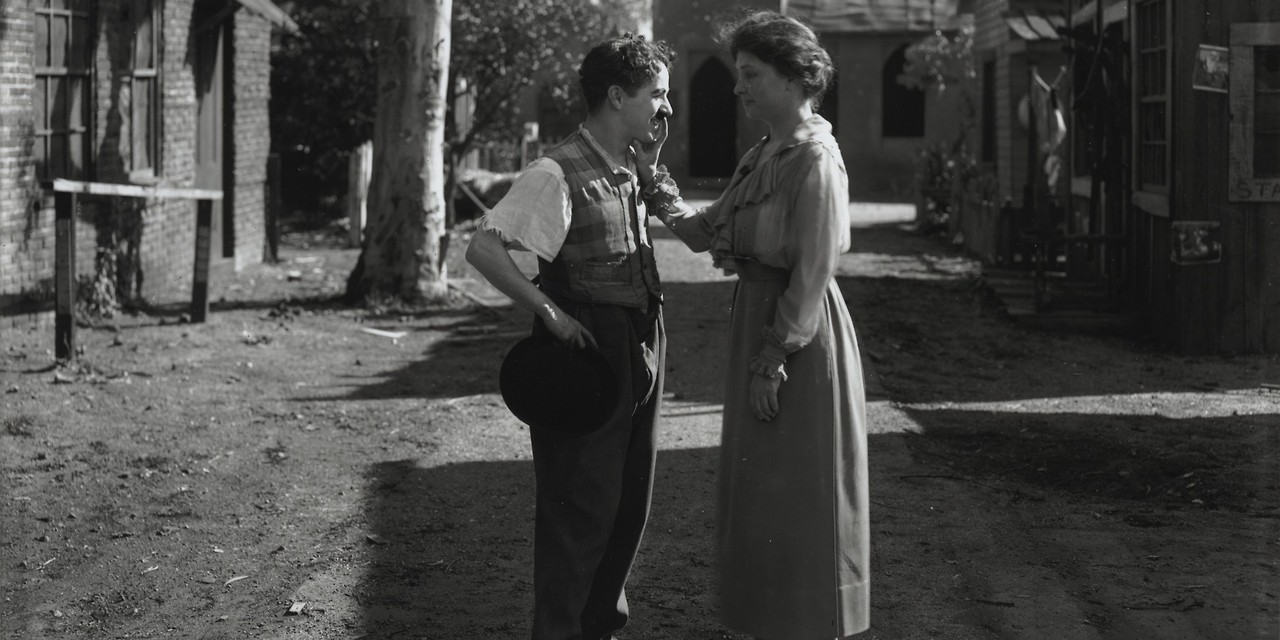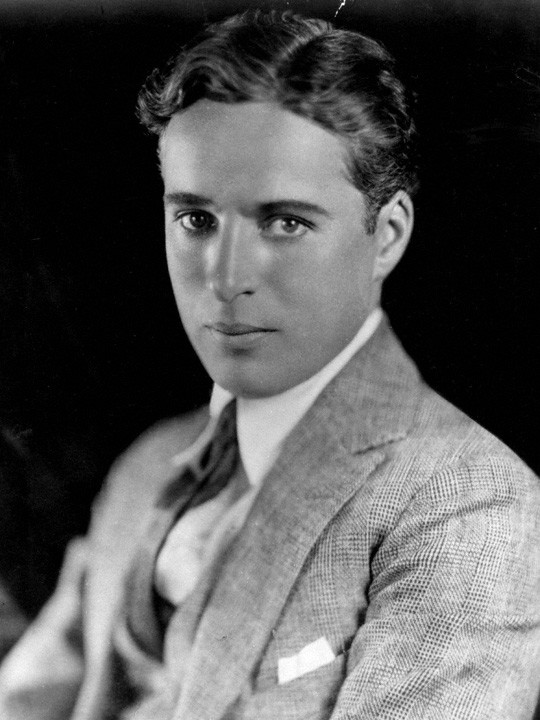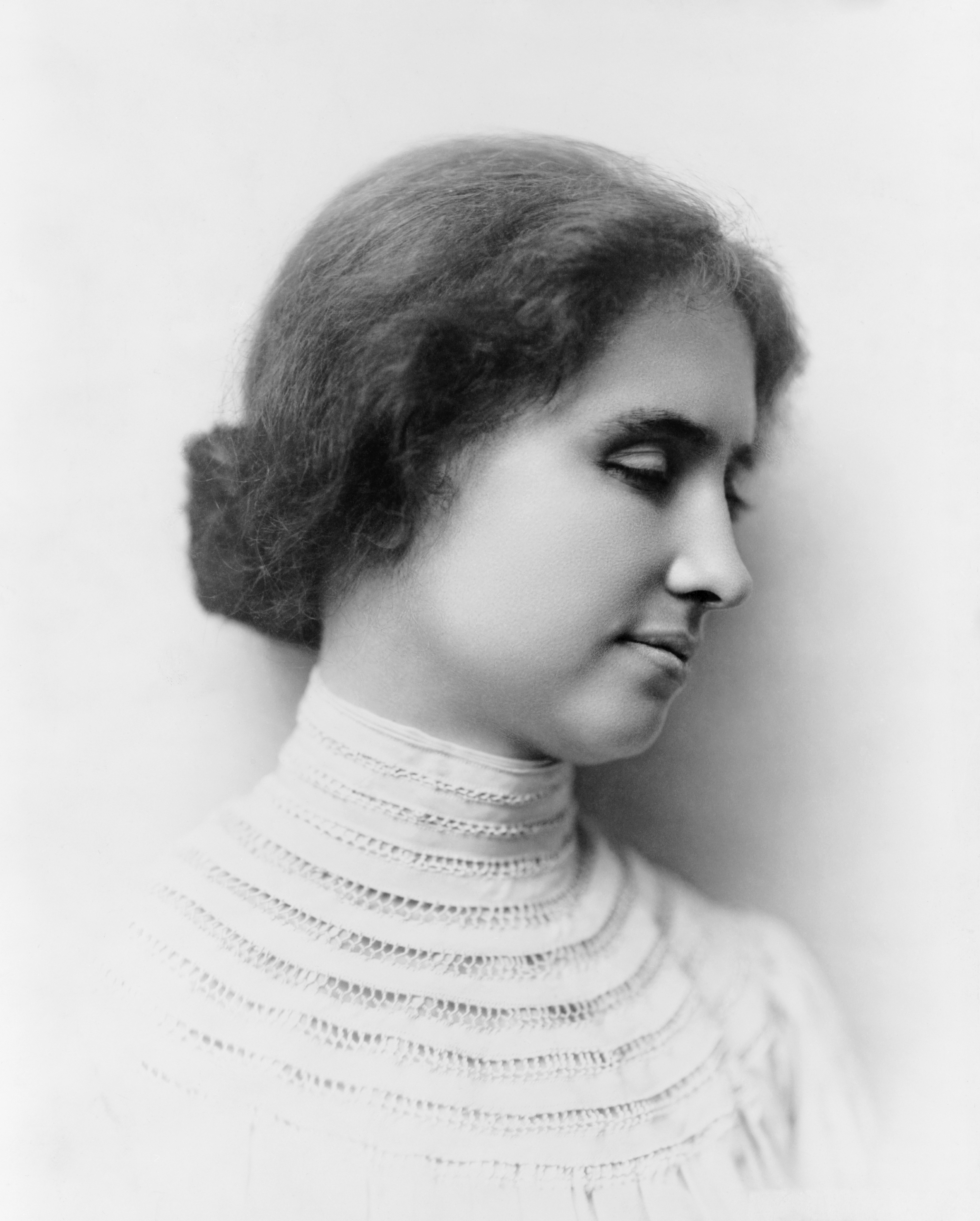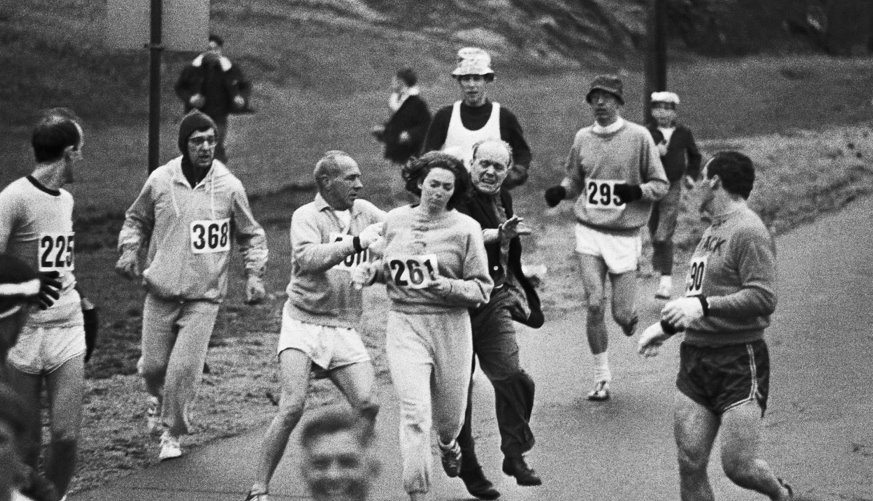That Time Helen Keller Met Charlie Chaplin | Unheard History
So in my travels across the internet, I stumbled over an amazing photo that I'd never seen nor did I ever hear the story before.
Today I'm going to tell you the story of when Helen Keller met Charlie Chaplin.
Sir Charles Spencer Chaplin was born in Lond on April 16th, 1889 to Charles Chaplin Sr and Hannah Chaplin. He grew up in such poverty that his authorized biographer, David Robinson, named his story "the most dramatic of all the rags to riches...ever told". His father and mother separated around 1891, leaving Hannah to raise her children alone filling in odd jobs here and there. Hannah eventually succumbed to mental illness in which she had to send her children to workhouses, their estranged father, and the likes until her death in 1928. "I was hardly aware of a crisis because we lived in a continual crisis:" Chaplin would later say about his childhood, "and, being a boy, I dismissed our troubles with gracious forgetfulness."
In 1914, Chaplin finally made his film debut in Making a Living. However, it wasn't until his second appearance in Kid Auto Races at Venice where his classic Little Tramp image took hold of the people.
"I wanted everything to be a contradiction: the pants baggy, the coat tight, the hat small and the shoes large ... I added a small mustache, which, I reasoned, would add age without hiding my expression. I had no idea of the character. But the moment I was dressed, the clothes and the makeup made me feel the person he was. I began to know him, and by the time I walked on stage he was fully born." Chaplin later said in his autobiography about the infamous character.
His career blossomed from then on, going through torrid and toxic love affairs, (that resulted in three children) along the way until he finally met his fourth and final wife Oona O'Neil of which he had eight children with her.
Before finding bliss with Oona Chaplin made a number of box office hits. Such as Modern Times and The Greatest Dictator. The later, however, was seen as the beginning of the downfall of his career as his iconic Little Tramp character. It was a mockery of Adolf Hitler during WWII and at the end, Chaplin stripped the regularity of characters not knowing the camera was there and made a speech speaking into the camera. Personally, Chaplin's speech in The Greatest Dictator is to this day one of the most important speeches ever recorded. I don't think you can watch it without wanting to stand up and fight. Nor without getting chills. However passionate and needed this speech was, it did contribute to Chaplin's decline in popularity as now the Little Tramp was seen as politized.
Now let's rewind to June 27, 1880, in Tuscumbia, Alabama, when Helen Adams Keller was born. Unlike Chaplin, she was born to financially stable parents and never had to worry about poverty as her difficulties would come in a different form. It wasn't until 1882 when she contracted either scarlet fever or meningitis that left her deaf and blind. Growing up Keller had her own means of communicating with her family having created different signs. It wasn't until four years later when her mother Kate Adams read American Notes by Charles Dickens (a story about a deaf and blind woman being successfully educated) which inspired her to reach out to physicians that led to contacting Perkins Institute For The Blind which led to former student Anne Sullivan being selected as a tutor for young Keller. This tale from then on is pretty infamous. Sullivan and Keller struggled through communication problems and stubbornness of a child till Keller finally learns how to spell "water". From then on Keller ran Sullivan ragged trying to find everything and know what everything was called. It's an amazing tale that's been captured by many in plays, movies, and by Keller herself.
Keller was able to attend Perkins Institute For The Blind in 1888-1894ish when Keller began an education in New York City at Wight-Humason School for the Deaf until 1896ish when she began school at The Cambridge School for Young Ladies it was then that she was able to attend Radcliffe College between 1900-1904 when she graduated and thus became the first deaf and blind person to earn a Bachelor of Arts degree.
Earning all these accomplishments at an early age and learning to work with her disabilities to better herself garnered Keller a following just as Chaplin had done with his arts. Keller was a champion advocate for people with disabilities, she was a suffragette, pacifist, radical socialist, and a birth control supporter. Alongside setting up a foundation (Helen Keller International) that researched vision, health, and nutrition, another called American Civil Liberties Union, Keller said in 1911,
"The few own the many because they possess the means of livelihood of all ... The country is governed for the richest, for the corporations, the bankers, the land speculators, and for the exploiters of labor. The majority of mankind are working people. So long as their fair demands—the ownership and control of their livelihoods—are set at naught, we can have neither men's rights nor women's rights. The majority of mankind is ground down by industrial oppression in order that the small remnant may live in ease." Source
Thirty-some years later, Chaplin would echo these sentiments in The Greatest Dictator.
So now that we know about these widely different yet similar people, how did the picture above occur?
In lamens terms, they were both celebrities. Keller was an accomplished author and Chaplin a movie actor, writer, and director. It'd be strange if they didn't meet in theory. However, what I love is how these twos' paths cross. She's deaf and blind, she wouldn't have a want or need to go to the movies in which Chaplin's career is based. Also, a note that Ideablog pointed out is when they met Chaplin was at a disadvantage so to speak. He hadn't any of his usual tools of being physically or visually funny with Keller, he only had what Sullivan and Polly Thompson could sign to her as they watched his movies on the set of Sunnyside.
What is truly amazing about these photographs is we get to see how art can transcend disabilities and move anyone. Keller was laughing at the outrageous antics of Little Tramp as Thompson and Sullivan signed them to her. Keller was able to hear Chaplin speak when he let her feel his face, throat, clothes, and mustache. I think even Chaplin was surprised that she was so taken by him, at Keller's recollection she said, "He sat beside me and asked again and again if I was really interested---if I liked him and the little dog in the picture."
Keller and Chaplin had messy and often more than not difficult lives, but they are the true testament to how amazing this life can be. That it is our lives and we're free and able to make it as beautiful as we can. Not only for ourselves but for those around us. This world is all of ours. We have the power to learn and educate ourselves. We have the power to stand up and start acting. To put ourselves out there and become whatever it is we want to be. We can come to a point where we can build a safer more extraordinary place for the future. All we have to do is try.
Also sidenote I love this little bit about Keller spilling the deeds on Chaplin and Sullivan:
"Teacher was shy and restrained with [other celebrities] but Charlie Chaplin. At a dinner party he would talk with no one else but she, telling her the story of his life and all his marriage problems. Finally, he asked her: 'Do you think I'm disgusting?'
'Yes,' she replied. 'Anyone who would have so many custard pies thrown in his face is disgusting.' They soon became fast friends."
Until next time!
Sources and further reading:
Today I'm going to tell you the story of when Helen Keller met Charlie Chaplin.
 |
| The Pic to Pique An Interest |
If you grew up in North America I'm sure you heard all about Helen Keller while in school. I remember in third grade we spent a whole week studying her life and throughout the rest of 4th, 5th, and 6th grade we did more and more. In those times we also were introduced to Charlie Chaplin. Never, though, were the two ever mentioned in the same sentence or capacity that they actually knew each other, at least not when I was studying.
In case you need an introduction to these two game changers here's a quick and not at all full history of the two.
 |
| What a Handsome Dude |
Throughout his continual crisis, Chaplin, though the motivation of his mother and connections of his father took to the stage where he became a dancer in the Eight Lancashire Lads through 1899-1900. The troupe was very popular but Chaplin wanted to step away from dancing and into the art of comedy. This led him through failed plays where his performances were praised so much that he landed a starring role in Sherlock Holmes between 1905-1906. Through connections from his brother Sydney, he landed a role in Fred Karno's comedy company from 1906-1913 where he toured North America and signed a contract with the New York Motion Picture Company thus leaving Karno's company behind.
 |
| 104 Years Later and Same |
In 1914, Chaplin finally made his film debut in Making a Living. However, it wasn't until his second appearance in Kid Auto Races at Venice where his classic Little Tramp image took hold of the people.
"I wanted everything to be a contradiction: the pants baggy, the coat tight, the hat small and the shoes large ... I added a small mustache, which, I reasoned, would add age without hiding my expression. I had no idea of the character. But the moment I was dressed, the clothes and the makeup made me feel the person he was. I began to know him, and by the time I walked on stage he was fully born." Chaplin later said in his autobiography about the infamous character.
His career blossomed from then on, going through torrid and toxic love affairs, (that resulted in three children) along the way until he finally met his fourth and final wife Oona O'Neil of which he had eight children with her.
Before finding bliss with Oona Chaplin made a number of box office hits. Such as Modern Times and The Greatest Dictator. The later, however, was seen as the beginning of the downfall of his career as his iconic Little Tramp character. It was a mockery of Adolf Hitler during WWII and at the end, Chaplin stripped the regularity of characters not knowing the camera was there and made a speech speaking into the camera. Personally, Chaplin's speech in The Greatest Dictator is to this day one of the most important speeches ever recorded. I don't think you can watch it without wanting to stand up and fight. Nor without getting chills. However passionate and needed this speech was, it did contribute to Chaplin's decline in popularity as now the Little Tramp was seen as politized.
 |
| 1912 |
Keller was able to attend Perkins Institute For The Blind in 1888-1894ish when Keller began an education in New York City at Wight-Humason School for the Deaf until 1896ish when she began school at The Cambridge School for Young Ladies it was then that she was able to attend Radcliffe College between 1900-1904 when she graduated and thus became the first deaf and blind person to earn a Bachelor of Arts degree.
Earning all these accomplishments at an early age and learning to work with her disabilities to better herself garnered Keller a following just as Chaplin had done with his arts. Keller was a champion advocate for people with disabilities, she was a suffragette, pacifist, radical socialist, and a birth control supporter. Alongside setting up a foundation (Helen Keller International) that researched vision, health, and nutrition, another called American Civil Liberties Union, Keller said in 1911,
 |
| If You Haven't Heard The Speech, What Are You Doing? |
"The few own the many because they possess the means of livelihood of all ... The country is governed for the richest, for the corporations, the bankers, the land speculators, and for the exploiters of labor. The majority of mankind are working people. So long as their fair demands—the ownership and control of their livelihoods—are set at naught, we can have neither men's rights nor women's rights. The majority of mankind is ground down by industrial oppression in order that the small remnant may live in ease." Source
Thirty-some years later, Chaplin would echo these sentiments in The Greatest Dictator.
 |
| Another One |
In lamens terms, they were both celebrities. Keller was an accomplished author and Chaplin a movie actor, writer, and director. It'd be strange if they didn't meet in theory. However, what I love is how these twos' paths cross. She's deaf and blind, she wouldn't have a want or need to go to the movies in which Chaplin's career is based. Also, a note that Ideablog pointed out is when they met Chaplin was at a disadvantage so to speak. He hadn't any of his usual tools of being physically or visually funny with Keller, he only had what Sullivan and Polly Thompson could sign to her as they watched his movies on the set of Sunnyside.
What is truly amazing about these photographs is we get to see how art can transcend disabilities and move anyone. Keller was laughing at the outrageous antics of Little Tramp as Thompson and Sullivan signed them to her. Keller was able to hear Chaplin speak when he let her feel his face, throat, clothes, and mustache. I think even Chaplin was surprised that she was so taken by him, at Keller's recollection she said, "He sat beside me and asked again and again if I was really interested---if I liked him and the little dog in the picture."
Keller and Chaplin had messy and often more than not difficult lives, but they are the true testament to how amazing this life can be. That it is our lives and we're free and able to make it as beautiful as we can. Not only for ourselves but for those around us. This world is all of ours. We have the power to learn and educate ourselves. We have the power to stand up and start acting. To put ourselves out there and become whatever it is we want to be. We can come to a point where we can build a safer more extraordinary place for the future. All we have to do is try.
 |
| Thompson, Sullivan, Keller, and Chaplin in 1918 |
Also sidenote I love this little bit about Keller spilling the deeds on Chaplin and Sullivan:
"Teacher was shy and restrained with [other celebrities] but Charlie Chaplin. At a dinner party he would talk with no one else but she, telling her the story of his life and all his marriage problems. Finally, he asked her: 'Do you think I'm disgusting?'
'Yes,' she replied. 'Anyone who would have so many custard pies thrown in his face is disgusting.' They soon became fast friends."
 |
| Sullivan is a SAVAGE! Right For the Throat! |
Until next time!
Sources and further reading:
- Helen Keller Info
- Charlie Chaplin Info (I have this book so go and buy it if you'd like to know more about Chaplin!)
- Discoveringchaplin.com She made an amazing post about their meeting!
❤CJ❤










Be good to one another! Nice! How are you? Did your medical stuff settle down?
ReplyDeleteI bumped into this post today while researching the ever awesome, iconic Annie Sullivan. i am a historical reenactor
who plays Annie Sullivan. https://anniesullivanspeaks.com/
It has been awhile since I last performed and I need to brush her off...Then I found you and your post. It is such a charming story I don't know how it escaped me! I just wanted to shout out and thank you. Keep writing! Always, C
In this case you will begin it is important, it again produces a web site a strong significant internet site: Harris County
ReplyDelete